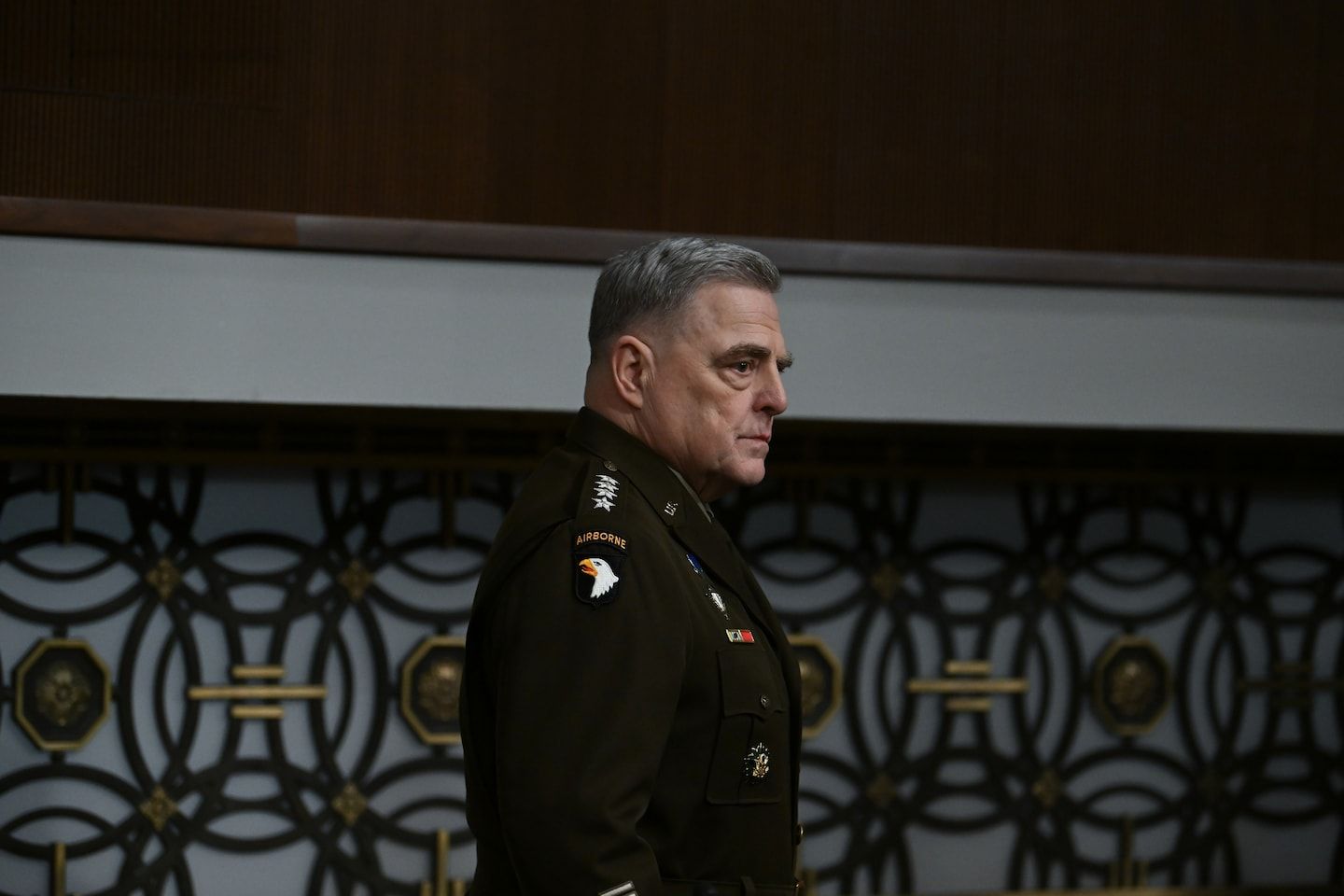Is the Ukraine war headed for stalemate? - The Washington Post
Listen 5 min Comment on this story Comment Gift Article Share
As Ukraine’s counteroffensive struggles to make headway against fortified Russian lines, I found myself going back to remarks late last year by Gen. Mark A. Milley, chairman of the Joint Chiefs of Staff. Make sense of the news fast with our daily newsletter ArrowRight Milley spoke at the Economic Club of New York in November 2022 just as Ukrainian troops were completing the expulsion of Russian forces from the southern city of Kherson. Kyiv had stunned the world by repelling Moscow’s initial invasion — forcing Russia back to roughly the lines of control in place today — and the top U.S. general made news by floating a negotiated settlement to the war.
He compared the situation in Ukraine to World War I. Around Christmas of 1914, Milley said, “you’ve got a war that is not winnable anymore, militarily.” Yet European leaders decided they had no choice but to push for total victory. One million deaths became 20 million by the war’s end.
Advertisement
“Things can get worse,” Milley said, adding: “When there’s an opportunity to negotiate, when peace can be achieved, seize it. Seize the moment.”
Follow this author Jason Willick 's opinions Follow
The next week, Milley again suggested that time was ripe for negotiations. In a news conference, he said that despite Ukraine’s heroic success in driving the Russians from Kharkiv and Kherson, it would be “very difficult” to evict Russia’s army from the entire country by force. There might be an opening for political solutions, however: “You want to negotiate from a position of strength,” Milley said, and “Russia right now is on its back.”
Milley’s trial balloon fell to the ground. The Biden administration promptly distanced itself from his remarks. We don’t know whether Russia could have been open to negotiations. But even the idea of exploring a political settlement was cast in Washington policy circles as undercutting Ukraine’s goal of a total victory. Expectations for Ukraine’s prospects of pulling off a decisive counteroffensive against the remaining Russian positions in the East swelled through the winter and spring.
Advertisement
Powered by infusions of American arms, the offensive finally began early last month. But the hoped-for breakthrough hasn’t materialized. The military analysts Michael Kofman and Rob Lee, who recently returned from the front, describe a grinding war of attrition with entrenched Russian forces holding their ground while relatively inexperienced Ukrainian soldiers are struggling to synchronize their offensive operations.
In public, Western leaders are urging patience. Ukraine’s counteroffensive is far from over. Yet Milley’s skepticism about Ukraine’s ability to achieve total victory appears to have been widespread within the Biden administration before the counteroffensive began.
The Wall Street Journal’s Daniel Michaels reported this week that “Western military officials knew Kyiv didn’t have all the training or weapons — from shells to warplanes — that it needed to dislodge Russian forces.” That tracks: In April, The Post reported on a leaked U.S. intelligence document forecasting only “modest” territorial gains for Ukraine. “Enduring Ukrainian deficiencies in training and munitions supplies probably will strain progress and exacerbate casualties during the offensive,” the document said.
Advertisement
If this is representative of intelligence and military assessments in government, why has the Biden administration not been quicker in providing advanced arms to Ukraine?
One answer is that there is no magical “wonder weapon” that could make a decisive difference. Speaking at the Aspen Security Forum last week, national security adviser Jake Sullivan pointed out that the high quality of air defenses on both sides have made air superiority unachievable. He said American military commanders doubt “the notion that F-16s would play a decisive role in this counteroffensive.”
Another answer is that the West is straining to meet Ukraine’s existing needs, as its military industrial base is not on a war footing. The shortage of 155mm artillery shells is apparently so bad that the Biden administration was forced to send cluster munitions to fill the gap. Sending Ukraine the Army’s ATACMS missile system — one of the last major weapons the administration is holding back — could hurt U.S. readiness elsewhere in the world.
Advertisement
It’s worth posing the question Gen. David Petraeus famously asked ahead of the Iraq War in 2003: “Tell me how this ends.” If Ukraine’s counteroffensive falters, the path of political least resistance is probably not negotiation with an emboldened Russia. It’s for the West to gear up for another Ukrainian offensive in 2024, and another one after that. After all, there are worse outcomes than a grinding stalemate in eastern Ukraine, which — while costly — is neither physically risky nor politically humiliating for the United States.
Ukraine is still in the fight, and a Russian collapse could still happen. Wars of attrition can appear to be descending into stalemate, until suddenly the mounting toll leads to defensive lines collapsing. And the Wagner Group mutiny last month vividly highlighted the brittleness of Russia’s command structures.
But if the prospects for Ukrainian military victory are in fact remote — and if American leaders know it — then let’s hope they can show more wisdom and flexibility than the World War I leaders of whom Milley spoke last November.
Gift this article Gift Article
Source: The Washington Post


